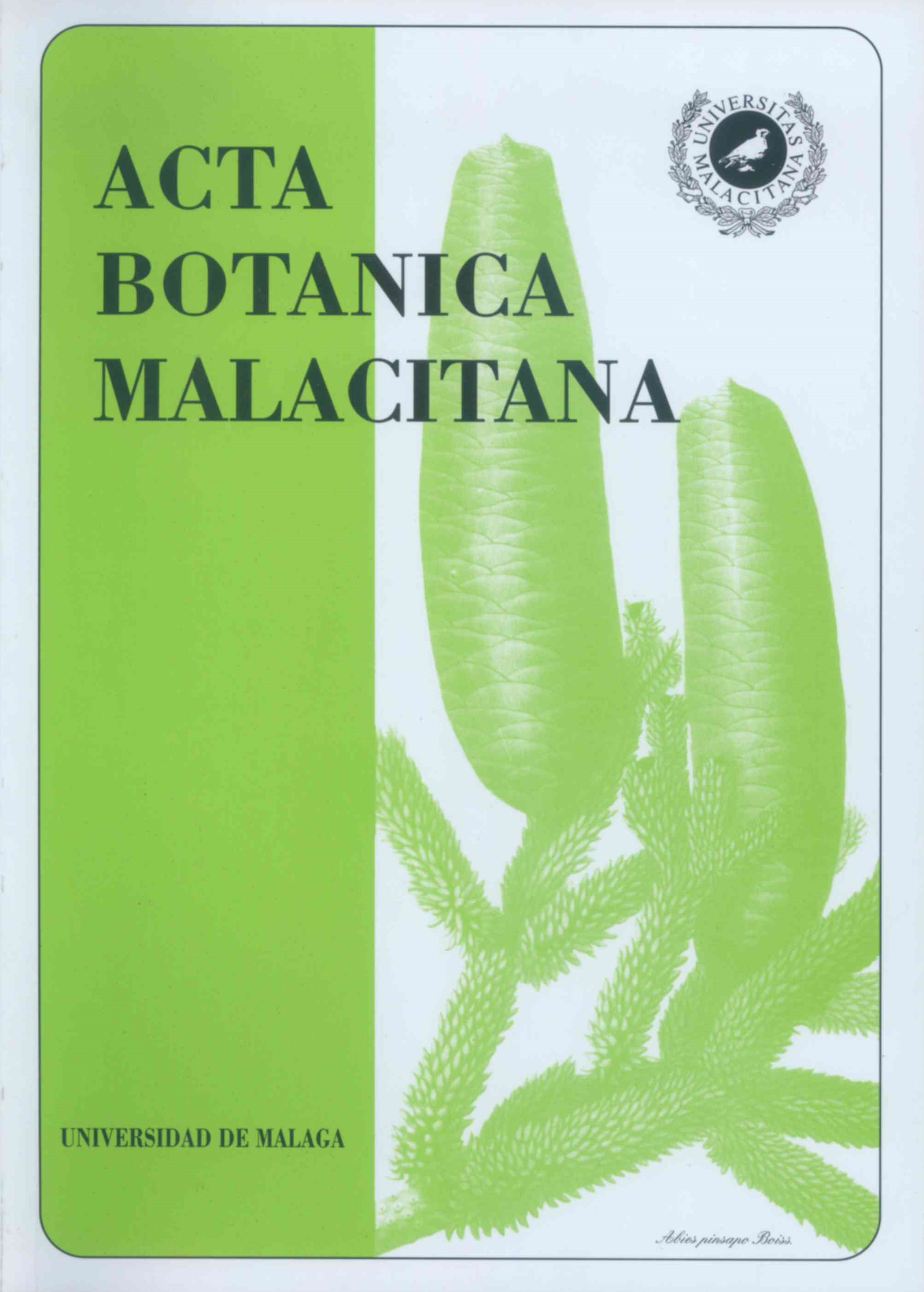A syntaxonomic approximation about the vegetation of Peru. Classes, orders and alliances
DOI:
https://doi.org/10.24310/abm.v27i0.7310Keywords:
Vegetation, Phytosociology, Syntaxonomy, PeruAbstract
In this paper, a first syntaxonomic approximation to the syntaxonomic scheme of the Peruvian vegetation down to the alliance level is presented. Two new classes (Nicoticmo-Ambrosietea and Mayacetea f hiviatilis), 12 orders (Adiantetalia raddiani, Alnetalia, Cestro-Prunetalia, Commelinetalia, Cryptocarpo-Prosopidetalia, Mutisio-Baccharidetalia, Nicotianetalia, Oryzo- Hymenachnetalia, Polylepidetalia racemosae, Polypodio-Puyetalia, Salicetalia caroliniano- humboldnanae and Saxifragetalia magellanicae), 14 alliances (Adicional subvolubilis, Aristido- Chloridion, Bursero-Prosopidion, Espostoo-Neoraimondion, Loasion, Munsio-Ophryosporidion, Myrciamhion quinquelobae, Myrico-Alnion, Peperomio-Puyion, Ribesido-Polylepidion, Saxifragion magellanicae, Sicyo-Urticion„Siegesbeckio-Commelinion and Tecomion arequipensis) and 10 associations (Adiametum subvolubilis, Bartiadesio-Ophryosporidetum, Cercidio-Prosopidetum, Haageocereo-Neoraimondietum, Peperomio-Tillandsiencm, Philoglosso-Urocarpidetutn, Schino- Acacietum, Tristerido-Myrcianthetum, Valeriano-Saxifragetunt and Valleo-Alnetum) are described. Also, a new status is stablished (Chusqueetalia tessellatae stat. nov. ) to systematize the Andean bamboo-scrubs ("chuscales").
Downloads
Metrics
Downloads
Published
How to Cite
Issue
Section
License
Copyright (c) 2019 Acta Botanica Malacitana

This work is licensed under a Creative Commons Attribution-NonCommercial-ShareAlike 4.0 International License.
All information related to the licensing of published works in Acta Botanica Malacitana and copyright can be found in our Editorial Policy.







1.png)
